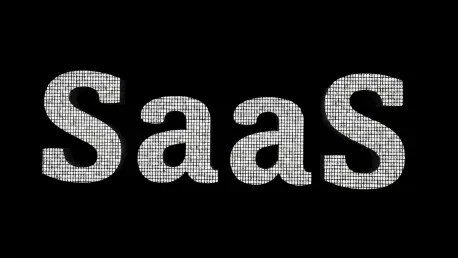Overview Of An AI-Native Breakout
A quiet revolution in developer tooling just surfaced in the numbers, and the scale resets what software growth can look like when an AI-native product compresses adoption, monetization, and learning into a single loop that keeps accelerating with every keystroke and commit. Cursor reached more than $1 billion in annual recurring revenue roughly two years after launch and climbed to a private valuation of $29.3 billion within 43 months, placing it among the fastest value creation stories in B2B software.
The headline metrics tell only part of the story. Cursor’s rise signals a structural shift in how enterprise software is built, adopted, and valued. The company grew to $100 million ARR with no marketing spend, expanded from $1 million ARR in late 2023 to $500 million by mid-2025, and then crossed $1 billion by November. With about 300 employees, ARR per employee exceeded $3.3 million, a figure that reframes what efficiency means for product-led growth at scale.
The AI-Native SaaS Landscape
Developer tooling sits at the core of the AI stack, where coding assistants, AI-augmented IDEs, workflow orchestration, and model/data infrastructure converge into daily workflows. Demand has been primed by GitHub Copilot, Claude Code, and Windsurf, which turned AI-assisted coding into a default expectation. Cursor inserted itself into this moment by treating the IDE as infrastructure, not a point tool, and by using a proprietary “Composer” engine tied to real usage data.
Three technological drivers reinforced this shift. Foundation models matured quickly, retrieval improved context relevance, and agentic workflows turned suggestions into multi-step execution. Telemetry fed back into models, letting products learn from real-world code paths and edge cases. As these loops tightened, the utility gap widened between AI-native environments and traditional IDEs stitched together with plug-ins.
Regulatory context also mattered. Enterprises demanded AI safety, data residency, and IP assurance before standardizing tools for global teams. Cursor positioned product choices around security baselines and compliance evidence while framing developer workflow control as a strategic layer. That framing invited platform-level valuations, because owning the flow of code and context confers durable moats: integrations deepen, switching costs rise, and the product becomes a daily habit across teams.
What Changed: Trends And Trajectory
The biggest change was in go-to-market physics. When day-one value is unmistakably 10x, onboarding friction collapses. Developers shared outputs, repos, and templates organically, pulling colleagues into trials without prompting. Product-led growth moved from a tactic to a strategy: Cursor reached $100 million ARR on virality and usage-led expansion, then scaled into enterprise standards once teams discovered cost savings and cycle-time reductions.
Data and usage formed a compounding flywheel. Each interaction—code generation, refactor, test suggestion—improved Composer’s relevance. Better results drove higher retention, which increased usage, which sharpened the model again. These loops are hard to copy because they rely on live, permissioned telemetry and workflow context, not just static code dumps. Capital efficiency followed naturally, as the product absorbed tasks often handled by larger support and sales teams.
Signals of defensibility multiplied over time. Reported acquisition interest from major AI players, plus strategic investment from NVIDIA and Google, pointed to Cursor’s centrality in the stack. The funding arc reflected that confidence—Series B at $2.6 billion in December, Series C at $9.9 billion in June, and Series D at $29.3 billion in November—while the business crossed $1 billion ARR with roughly 360,000 paying customers from a base of more than one million users. A 36% free-to-paid conversion rate, versus the typical 2–5% in freemium SaaS, reinforced the message: the product sold itself.
Metrics, Benchmarks, And Forward View
Cursor’s growth milestones drew a steep curve: from $1 million ARR in December 2023 to $48 million by October 2024, $100 million by January 2025, $500 million by June, and more than $1 billion by November. At roughly 29x forward ARR, the valuation aligned with infrastructure-tier comps—Databricks-, Stripe-, and OpenAI-level multiples that assume durable growth, defensibility, and strategic importance.
Efficiency stood out as much as scale. With about 300 employees at the $1 billion ARR mark, revenue per employee reached levels unusual even among elite public SaaS names. This profile came from two levers: automation embedded in the product and GTM, and a usage model that converted trials into paid seats at high rates without heavy sales overhead. As enterprises standardized, expansion within accounts added a second engine behind headline growth.
Looking ahead from the current base, the scenarios ranged wide but skewed optimistic if triple-digit growth persisted. If multiples remained stable and net revenue retention compounded, a path toward an $80–$120 billion valuation by 2027 appeared feasible. That path would depend on sustained conversion, disciplined expansion into regulated industries, and resilience against platform bundling from hyperscalers.
Frictions And Fault Lines
Risks sit behind the acceleration. Technical reliability is never “done” in AI-native products; hallucination mitigation, latency-cost trade-offs, and context windows at scale must improve continuously. Cursor’s bet is that privacy-safe learning loops and hybrid model orchestration will manage those tensions while preserving speed and accuracy.
Platform dynamics pose a second front. Hyperscalers can bundle assistants at low cost, and model providers control essential inputs. Defensibility must therefore come from workflow depth, proprietary telemetry, and brand trust rather than any single model edge. Building for on-prem and VPC-native inference reduces dependency risk while meeting enterprise control requirements.
Market friction remains practical. Pricing pressure intensifies as alternatives improve, procurement cycles in large companies can slow expansion, and developer-heavy segments risk saturation. Operationally, maintaining product velocity and enterprise-grade uptime with lean teams requires careful investment in secure SDLC, vulnerability management, and incident response. The mitigation plan is clear: quantify ROI in hard metrics, align pricing to value delivered, and add selective sales and solutions capacity where procurement demands it.
Rules Of The Game
Governance has become a feature, not a checkbox. Legal and IP regimes require clarity on code licensing, attribution, derivative works, and safe training practices. Enterprises want assurance that models do not ingest proprietary code without consent and that outputs respect licenses across ecosystems.
Data boundaries must be explicit. Privacy, residency, and customer-controlled telemetry are now table stakes. Cursor’s posture emphasizes SOC 2 and ISO 27001, SBOM availability, secure SDLC integration, and continuous vulnerability management, because these standards accelerate procurement and lower perceived risk in regulated settings. Model governance rounds out the stack with provenance, evaluation, auditability, and red-teaming.
Regulatory pressure is rising. The EU AI Act and evolving U.S. guidance influence procurement criteria and deployment architectures, especially in finance, healthcare, and public sector. Companies that make compliance a product capability can win trust faster, turning assurance into differentiation rather than drag on growth.
Where It Goes Next
Technology vectors are already reshaping expectations. Agentic coding that plans, executes, and verifies multi-step changes is moving from demonstration to production. Autonomous refactoring and migration tools promise to unlock legacy codebases, while multimodal interfaces—voice, diagrams, and logs—bring non-code context into the loop. On-prem and VPC-native inference options reduce latency and enhance privacy, enabling the most sensitive deployments.
Competition will not stand still. Verticalized assistants tailored to specific stacks, open-source acceleration that reduces core model costs, and hardware advances in GPUs and NPUs will pressure pricing and raise the bar on latency and accuracy. Customer preferences are evolving toward integrated environments and governance-first deployments, with Fortune 500 consolidation likely as standards harden around a few platforms.
Growth vectors extend beyond the developer core. Regulated industries, global expansion with data residency, education and upskilling programs, and partner ecosystems around extensions and APIs all reinforce Cursor’s flywheel. More usage leads to better models, which drive higher retention and expansion. Macro variables—capital availability, compute supply, and regulatory tightening—will shape multiples and pace, but leadership in workflow depth should buffer volatility.
Conclusions And Playbook
The findings pointed to a new baseline for enterprise software: AI-native, PLG-first products could compress time-to-scale while resetting efficiency benchmarks. Cursor’s trajectory demonstrated that undeniable day-one value, built-in learning loops, and governance-by-design converted developer enthusiasm into enterprise standards with minimal marketing. For builders, the actionable path was clear—prioritize 10x outcomes, quantify ROI, and wire privacy-safe telemetry into the product to power compounding improvements.
Incumbents faced a choice between defensive bundling and deep integration; the evidence favored partnership, investment, and workflow depth over feature parity. Investors benefited from focusing on infrastructure-adjacent AI with data moats, tracking conversion, retention, and ARR per employee as leading indicators. The central caveats remained growth durability, platform bundling, and execution at scale, but the defensive moves that mattered most were hybrid model strategies, compliance by design, and selective sales layering to speed procurement in complex accounts.
Taken together, Cursor’s ascent had reframed expectations for speed, efficiency, and defensibility in B2B software. Its mix of product quality, viral adoption, and strategic validation had offered a playbook that scaled with fewer people and stronger economics. The next steps for the market were to professionalize governance, deepen workflow integration, and industrialize agentic capabilities—moves that would separate enduring platforms from fast followers as AI-native development entered its consolidation phase.









